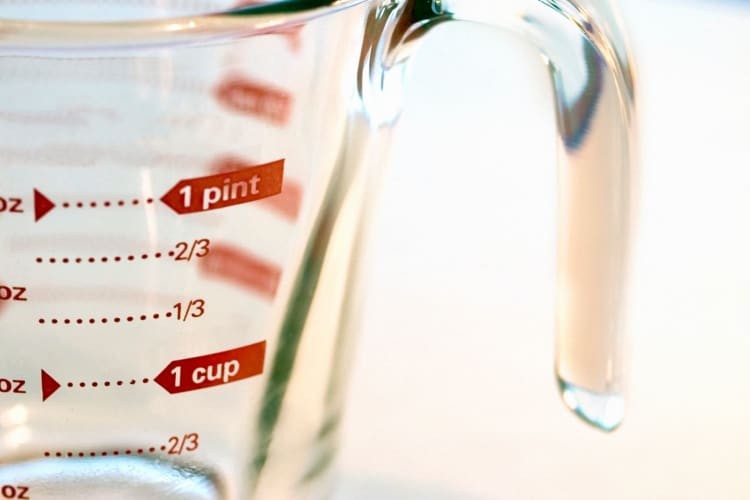If you’ve ever been in the middle of a recipe and paused, wondering, “Wait, how many ounces are actually in a pint?”, you’re definitely not alone. This seemingly simple kitchen conversion can be surprisingly confusing, especially since the answer isn’t always straightforward and depends on a few key factors.
Fear not! This comprehensive guide will break down everything you need to know about ounces and pints, clearing up the confusion and making your cooking and baking adventures much smoother. We’ll explore the differences between fluid and dry ounces, delve into U.S. versus Imperial pints, and even touch on how this applies to your favorite pint of beer.
Decoding the Ounce: More Than Just a Measurement
The ounce, a unit we frequently encounter in recipes and everyday life, has a history that stretches back to ancient Rome. Originally, it represented the weight of 1/12th of a Roman copper bar. Fast forward to 1959, when the United States and the British Commonwealth standardized the definition of an ounce, agreeing that a dry ounce officially weighs 28.349523125 grams.
However, the plot thickens when we step into the kitchen. It’s crucial to recognize that there are different types of ounces, primarily dry ounces and fluid ounces. Dry ounces measure weight, while fluid ounces measure volume, specifically for liquids. This distinction is vital for accurate cooking and baking.
For consistent results, always use the appropriate measuring tools. Liquid measuring cups are designed for volume, while dry measuring cups are meant for dry ingredients. For ultimate precision, especially when dealing with conversions, consider investing in a good kitchen scale. These tools will be your best allies when navigating the world of kitchen measurements and figuring out how many oz. are in a pint.
Pint Demystified: A Volume Measurement with Variations
A pint is a unit of volume, traditionally defined as 1/8th of a gallon. While this might seem straightforward, like ounces, pints also have variations, particularly when we consider dry versus liquid measurements.
The key difference arises because dry ingredients and liquid ingredients have different densities and weights for the same volume. In the Imperial system (used in the UK and some other countries), liquid pints and dry pints are the same size. However, in the U.S. system, a dry pint is slightly larger than a liquid pint. Understanding these nuances is essential when we tackle the question of how many ounces are in a pint.
Unveiling the Conversion: How Many Ounces in a Pint?
Now, let’s get to the heart of the matter: how many ounces are in a pint? The answer depends on whether you’re dealing with liquid or dry measurements, and which system you’re using (U.S. or Imperial).
Liquid Pints:
In the U.S. system, a liquid pint contains 16 fluid ounces. This is the most common conversion you’ll encounter in American recipes and everyday cooking.
In the Imperial system, a pint holds 20 fluid ounces. Keep this in mind if you’re using recipes from the UK or other countries that use the Imperial system.
Dry Pints:
When it comes to dry ingredients, things get a bit more complex. Since pints are volume measurements, the weight in ounces can vary depending on the density of the dry ingredient. For example, a pint of feathers will weigh significantly less than a pint of rice.
However, there’s a helpful rule of thumb: “A pint’s a pound the world around.” This old saying suggests that for many common dry ingredients, a pint will roughly weigh around a pound. Since a pound is 16 dry ounces, this gives us an approximation.
Important Note: While “a pint’s a pound” is a useful guideline, it’s not always perfectly accurate. For precise measurements in baking and cooking, especially with dry ingredients, it’s always best to use weight measurements (ounces or grams) whenever possible, or consult specific conversion charts for the ingredient you’re using. For instance, a pint of blueberries is closer to 12 ounces, not 16.
What About Beer? Pints and Ounces in the Pub
Pints are a common way to order beer, so it’s natural to wonder how many ounces are in a pint of beer. Just like with other liquids, the answer depends on location and measurement standards.
In the United States, a pint of beer is typically 16 fluid ounces. So, when you order a pint at a bar in the US, you can expect to receive 16 ounces of your favorite brew.
However, in the United Kingdom and other countries using the Imperial system, a “pint” of beer is usually an Imperial pint, which is 20 fluid ounces. This means you get a slightly larger serving when ordering a pint of beer in these regions.
Essential Tools for Measuring Ounces and Pints Accurately
To avoid measurement mishaps and ensure your recipes turn out perfectly, having the right measuring tools is essential.
For dry ingredients, a kitchen scale is your best friend. It provides the most accurate measurements, especially when converting between volume and weight. The Zwilling Kitchen Scale is a highly recommended option for precise dry ingredient measurements.
When measuring liquids, use dedicated liquid measuring cups. These are typically made of clear glass or plastic and have markings on the side for fluid ounces, pints, and other liquid units. A set of glass measuring cups is a versatile addition to any kitchen and also makes a thoughtful gift for baking enthusiasts.
Master the Pint and Ounce Conversion for Kitchen Success
Understanding the relationship between ounces and pints is a fundamental skill for any home cook or baker. While it might seem confusing at first, remembering the key differences between liquid and dry measurements, and U.S. versus Imperial systems, will empower you to confidently navigate recipes and achieve consistent culinary results. Don’t let measurement conversions intimidate you – with a little knowledge and the right tools, you’ll be measuring like a pro in no time!

